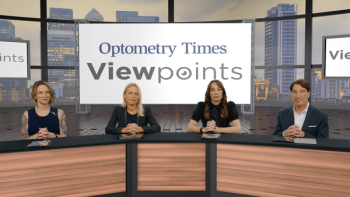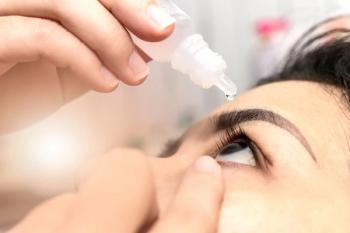
ARVO 2024: Dr. John Sheppard shares results from GOBI, MOJAVE trials
The 2 FDA registration trials for perfluorohexyloctane resulted in scientifically significant results for improvement of mild and moderate symptoms of dry eye disease.
More may be in store for the treatment of
Video Transcript
Editor's note - This transcript has been edited for clarity.
David Hutton:
I'm David Hutton of Ophthalmology Times. The Association for Research in Vision and Ophthalmology is holding its annual meeting in Seattle. Dr. John Sheppard is joining us today to discuss his presentation at the meeting. Thanks for being here. Tell us about your presentation.
John D. Sheppard, MD, MSc, FACs:
I'm here in Norfolk, Virginia and very happy to share our data from a post-hoc analysis of 2 FDA registration trials for perfluorohexyloctane or PFHO, an ophthalmic solution for patients with dry eye disease and meibomian gland dysfunction. The studies were called GOBI and MOJAVE. They were sponsored by both Novaliq of Heidelberg and Bausch + Lomb in the United States. These were prospective, randomized, multicenter clinical trials, and they looked at 4-time-a-day drops compared to a placebo of hypotonic saline. Now, the drops don't have an API or active pharmaceutical ingredient. Because the drops are the vehicle and the vehicle are the drops, it's 100% PFHO. This is a unique, semi-fluorinated alkane. It's used in retinal detachment surgery and blood product preservation and over large reservoirs of water coating the surface to prevent evaporation. Because of its biochemistry, these drops have a size of only 11 microliters. So there's no slop or overflow, and they have at least a 6 hour surface adhesion time to preserve evaporative tear loss to allow the osmolarity and the inflammatory processes on the surface of the eye to normalize, creating homeostasis, as all of the drops produced and retained and all of the tears produced by the patient are maximized. So in this trial, we looked of course at the registration data, and this met both sign and symptom endpoints in both trials, truly remarkable. In the post-hoc analysis that we're looking at at ARVO, we looked at baseline MGD score divided that into 2 groups: moderate and mild. We looked at the baseline total corneal fluorescein staining score and divided that into mild and moderate down the middle. We finally looked at the baseline, Schimer's 1 test and divided that below 10 millimeters and equal to or above 10 millimeters that is moderate and mild dry eye. We looked at the forest plot, and we looked at responder rate analysis. We found, from top to bottom, both the mild and the moderate of all 3 groups responded equally well statistically significantly to the medication compared to the vehicle. This tells us that the prescribing eye care provider can choose a wide variety of dry eye patients and expect excellent results as we saw in the clinical trials. This gives me confidence that these analyses of pooled data from the 2 Phase 3 randomized control trials show that PFHO is efficacious in the treatment of signs and symptoms of dry eye disease in patients with a wide variety of clinical presentations. Thank you.
Newsletter
Want more insights like this? Subscribe to Optometry Times and get clinical pearls and practice tips delivered straight to your inbox.











































.png)


